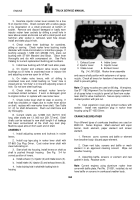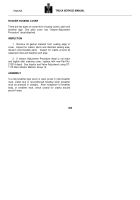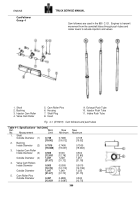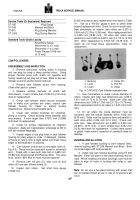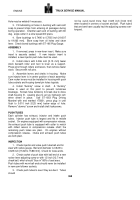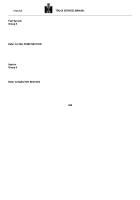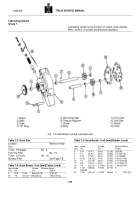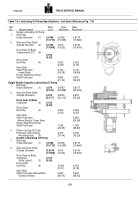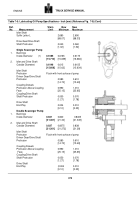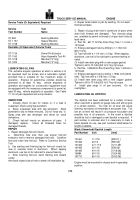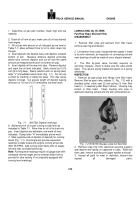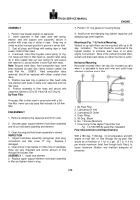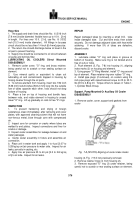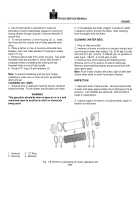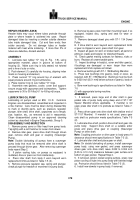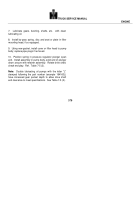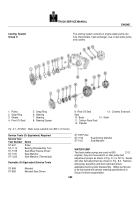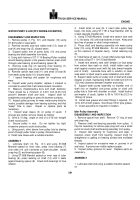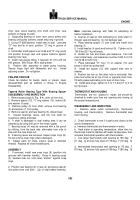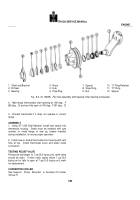TM-5-3805-254-14-P-2 - Page 378 of 894
TRUCK SERVICE MANUAL
ENGINE
1.
Determine oil pan part number; check high and low
capacity.
2.
Drain all oil from oil pan, make sure all oil has drained
from engine.
3.
Fill oil pan with amount of oil indicated as low level in
Table 7-1; allow sufficient time for oil to drain down into
the pan.
4.
Insert dipstick into dipstick tube until dipstick contacts
bottom of pan.
Measure distance dipstick protrudes
above tube, remove dipstick and cut off end the same
amount as measured protrusion (to bottom of cap).
5.
Insert dipstick all the way into tube.
Remove dipstick
and mark low oil level indicated.
Mark should be 0.010
inch [0.3 mm] deep.
Stamp (electric etch on spring steel)
letter "L" immediately above mark (Fig.
7-1).
Do not use
a chisel for marking, or stamp too deep.
This may cause
dipstick to break.
Cut excess length off dipstick leaving
minimum of 1/2 inch [12.70 mm] below low level mark.
Fig.
7-1.
(V40726) Dipstick markings
6.
Add amount of oil to pan to bring to high level as
indicated in Table 7-1.
Allow time for all oil to drain into
pan.
Insert dipstick and withdraw; now mark oil level
indicated.
Stamp letter "H" immediately above mark.
7.
Mark opposite side of dipstick (if desired) for running
levels (Fig.
7-1).
Running levels provide equivalent
readings to static levels with engine running at low idle
(550
25 RPM).
Add running level marks with oil supply,
low and high, as stated previously.
Note:
Running level readings require oil gauge tube with
increased internal length and an internal drilled hole to
provide for tube venting (if not originally equipped with
running level markings).
LUBRICATING OIL FILTERS
Full-Flow Paper Element Filter
DISASSEMBLY
1.
Remove filter case and element from filter head,
remove seal ring and discard.
2.
Lift element from case; inspect element pleats if metal
is found in elements, an inspection of connecting rod and
main bearings should be made at once; discard element.
3.
The filter by-pass valve normally requires no
servicing; however, check to make sure the valve works
freely.
The valve is spring loaded and opens on a spring
differential.
INSPECTION
1.
Remove all pipe plugs and fittings from filter head.
Remove filter by-pass valve retainer (1, Fig.
7-2) with a
standard puller, valve seat (2) and spring (3) from filter
head (1), if necessary after Step 3 above.
Housing may
remain in filter head.
Clean housing and case in
approved cleaning solvent and dry with compressed air.
Back to Top

